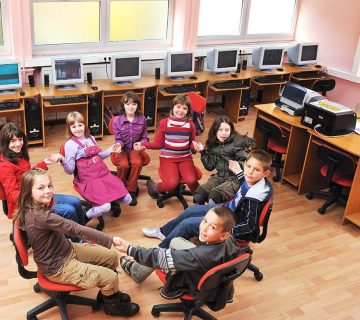Abstract
Life skills encompass a set of behavioral, cognitive, and social abilities that equip children to face life’s challenges effectively. Teaching these skills during childhood ensures balanced psychological, social, and moral growth. This article explains why life skills education is essential, identifies the key skills to teach, outlines methods for instruction at home and at school, and examines the consequences when these skills are neglected.
Introduction
Today’s world is complex, fast-paced, and full of challenges. To succeed, children need more than theoretical knowledge—they require tools such as self-awareness, emotion regulation, decision-making, and healthy relationships. Life skills education is a purposeful process that prepares a child for real-world demands. Unfortunately, in many educational systems, life skills instruction remains underemphasized.
Section 1: Definition and Necessity of Life Skills Education
- Problem-solving, creative thinking, empathy, self-control, and stress management
- Boosting children’s self-efficacy, confidence, and independence
- Building foundations for mental health and preventing behavioral disorders
- Helping children adapt more easily to school, family, and community environments
Section 2: The Most Important Life Skills for Children
- Self-Awareness: Recognizing one’s emotions, strengths, and personal values
- Emotion Management: Constructively handling anger, anxiety, and other negative feelings
- Decision-Making: Making sound choices by considering consequences
- Effective Relationships: Active listening, assertiveness, and conflict resolution
- Critical and Creative Thinking: Exploring issues from multiple angles and generating novel solutions
- Problem-Solving: Analyzing situations and finding logical courses of action
Section 3: Methods for Teaching Life Skills
At Home
- Open dialogue: Encourage children to express their feelings.
- Family group games: Use activities centered on decision-making and problem solving.
- Parental modeling: Demonstrate life skills in your own behavior and social interactions.
- Assign small responsibilities: Give children age-appropriate tasks to foster independence.
At School
- Curricular integration: Include life skills training in the formal curriculum.
- Interactive workshops and classes: Engage students in hands-on activities.
- Drama, storytelling, and role-play: Use creative methods to practice skills.
- Skill-based assessment: Evaluate progress in life skills alongside academic achievement.
Section 4: Consequences of Neglecting Life Skills Education
- Poor emotion control: Leading to aggression or social withdrawal
- Over-dependence on others: Difficulty making independent decisions
- Struggles in forming healthy relationships
- Greater risk-taking behavior or consumerism in adolescence
Section 5: The Role of the Education System and Media
- Educational policy: Mandate life skills instruction at all grade levels.
- Media content: Produce engaging, informative programs focused on life skills.
- Teacher and mentor training: Empower educators to model and teach these skills.
- Family engagement: Involve parents actively in the life skills development process.
Conclusion
Teaching life skills lays the foundation for raising responsible, creative, resilient, and socially capable individuals. For a healthy and dynamic society, we must prioritize skill-based education from an early age. Life skills are not merely a supplement—they are the cornerstone of effective teaching and upbringing.







